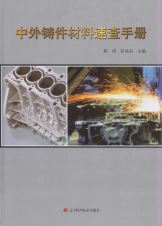
主要责任者: 陈琦,彭光弟
责任方式: 主编
出版者: 辽宁科学技术出版社
出版地: 沈阳
字数: 1170 千字
页码: 1-715
中图分类号: TG25-62
语种:中
定价:128.00
出版时间:2011-10
丛书多卷书否:否
书目简介:本册工具书共收录238条词条。
被引频次:4
| 词条 | 中外铸件材料速查手册 |
| 类别 | 中文百科知识 |
| 释义 |  主要责任者: 陈琦,彭光弟 责任方式: 主编 出版者: 辽宁科学技术出版社 出版地: 沈阳 字数: 1170 千字 页码: 1-715 中图分类号: TG25-62 语种:中 定价:128.00 出版时间:2011-10 丛书多卷书否:否 书目简介:本册工具书共收录238条词条。 被引频次:4 |
| 随便看 |
开放百科全书收录579518条英语、德语、日语等多语种百科知识,基本涵盖了大多数领域的百科知识,是一部内容自由、开放的电子版国际百科全书。